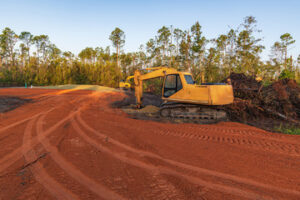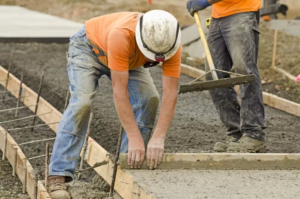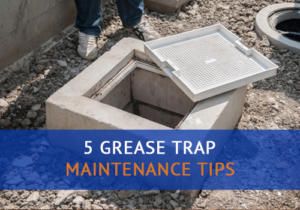Clearing allows farmers to make the most efficient use of their land by planting crops, grazing livestock and construction of farm buildings. Land Clearing practices can also help control invasive species and improve soil health.

Dense vegetation poses a fire risk. Rotting trees and bushes harbor diseases and pests. Cleared land can promote a healthier environment while increasing property value.
Vacant land can present many opportunities for investors, builders and developers, but it also introduces unique issues that don’t come up when buying a house. For example, a vacant lot could contain toxic waste and other hazardous materials that have been dumped on the property over time or moved and pushed underground by floods or erosion. It’s important to assess the risks involved when clearing a lot, and working with professionals who have experience with this type of work can help you avoid accidents or injury.
If the land is currently used for housing, it’s important to understand the current zoning and building requirements. This will help you determine what you can and cannot build on the property, and it’s important to know if the lot is landlocked or has access through a private road or easement. Having these details upfront can save you a lot of hassle down the road.
In addition to assessing the zoning and building requirements of a vacant lot, it’s important to research the property’s ownership history. This can be difficult to do, but it’s worth the effort. You may be able to find information about the lot’s owner online, or you can try knocking on doors in the neighborhood. People may be reluctant to share their information if they think you’re trying to collect on a debt or issue a violation, but explaining that you’re interested in cleaning up the lot for the community can change their attitude.
It’s also a good idea to get in touch with other business leaders who have experience clearing lots. They may be able to offer tips and tricks that will make your project more successful. Additionally, they may be able to introduce you to vendors and contractors who can help you with your project.
If the property is publicly owned, you can also check with local groups that support resident leaders in connecting with city agencies to turn vacant public land into productive community space.
Bushy Areas
Bushy areas are not only unsightly, but they can also reduce property value and cause safety hazards. Fortunately, land clearing services can help get these areas under control and restore them to their former glory.
Whether your property is a large residential lot or a small plot of farmland, land clearing can be an essential part of your land maintenance and cultivation process. The process removes any bushes, trees, or other vegetation that may be obstructing your crops or impeding the flow of water across your land. Additionally, it can help improve the overall health of your soil by preventing weeds and other unwanted vegetation from growing.
In addition to removing debris and invasive species, land clearing can also prepare your property for farming, construction, or agricultural use. Depending on the size of your land and the type of vegetation present, different techniques may be used to clear it. For example, grubbing and mulching are the most efficient and least expensive land clearing methods, while chemical removal or controlled burning require more time and resources to complete.
The first step of land clearing involves assessing the area and understanding the scope of work needed. This survey will include identifying the types of vegetation, any obstacles like rocks or structures, and the topography of your land. This information will help determine the most effective clearing method and the equipment required.
Once the land clearing process is underway, it is important to follow all applicable safety regulations. It is also vital to prioritize the disposal of waste materials and ensure that the proper care is taken for any protected plants or wetlands. Additionally, it is important to monitor the weather conditions throughout your project, as rainy weather can lead to erosion and washouts.
Land clearing is a necessary process for any home or business owner. It can help keep your property looking great, improve the efficiency of your landscaping, and increase your home’s curb appeal. By planning ahead, prioritizing safety, and utilizing the right equipment, you can transform overgrown or barren landscapes into functional and aesthetically pleasing spaces.
Pest Control
A property that’s overgrown with weeds and trees is a breeding ground for pests. They can carry diseases and airborne allergens that affect people and animals. Land clearing helps to remove these pests and promote a healthier environment for residents and visitors.
Clearing out excess trees and vegetation will also prevent soil erosion. Overgrown plants and weeds can cause heavy rains to erode the soil and wash away debris. This can damage roads, bridges, and waterways. Land clearing allows the rainwater to flow freely without being displaced by debris and soil.
Overgrown plant species can also create an overly dense habitat that blocks sunlight and reduces air circulation. This can lead to a decline in the growth of grass, flowers, and other plants. Clearing these overgrown areas will make it easier to grow these plants and improve the quality of the landscape.
Land clearing can also help prevent a fire hazard. A lot of weeds and rotting trees can start a forest fire that could threaten human lives and other wildlife. If a fire starts in these areas, they may spread to surrounding forests and towns. Land clearing can eliminate a potential fire hazard and allow the sunlight to reach more of the landscape.
Performing land clearing will also allow new plants to flourish. In order for trees, grasses, and other flowers to grow, they need to have access to sunlight. Land clearing will remove the overgrown plants and trees that are blocking sunlight. This will also allow the soil to receive the nutrients needed for healthy growth.
There are different land clearing methods used by experts depending on the scale of the project. Some techniques use heavy machinery to quickly clear large areas. Others use herbicides to kill unwanted vegetation. Controlled burning, also known as prescribed fire, is another method that uses controlled flames to clear a site. This technique is a good choice for rural settings because it promotes nutrient recycling and doesn’t harm the environment.
Before beginning any type of land clearing, it’s essential to consult with a professional. They will be able to recommend the best method for your particular situation. They will be able to evaluate the size and type of the area and determine whether the vegetation is beneficial or harmful. They will also be able to recommend the best techniques for maintaining the health of the soil and surrounding plants.
Agriculture
For those planning on using their land for agricultural purposes, clearing is necessary to prepare the soil. This is essential for planting and ensuring that crops will have access to the nutrients they need for healthy growth. It also ensures that the plants have room to grow and are not being interfered with by any existing vegetation or trees.
Before any physical work begins, it is important to make a clear plan for the land clearing process. This should include assessing the area and determining what methods and equipment are needed. This is particularly crucial for those who are working on a large scale or are near bodies of water as there may be specific regulations to follow regarding erosion control and water runoff.
Once the plan is in place, the physical work can begin. There are various techniques that can be used depending on the type of terrain and vegetation. For example, some people choose to use a machine like a bulldozer or backhoe to quickly remove any vegetation and debris from the area. Others may use a chemical approach to clear the land by applying herbicides to kill off unwanted weeds and grasses. Finally, some people prefer to use grazing animals, such as goats or pigs, that can naturally eat away at the vegetation and clear the land over time.
Regardless of the method chosen, it is important to have the proper safety gear and follow all relevant legal requirements for the land clearing process. This will prevent any potential accidents and injuries, as well as protect the environment from any negative impacts that could be caused by the project. It is also important to hire a professional company with the experience and knowledge to complete the land clearing process efficiently and effectively.
When choosing a company for land clearing, it is recommended to get price estimates from several different companies and to compare their qualifications and customer reviews. This will help you find a company that is within your budget range and that will provide the best results for your needs.




